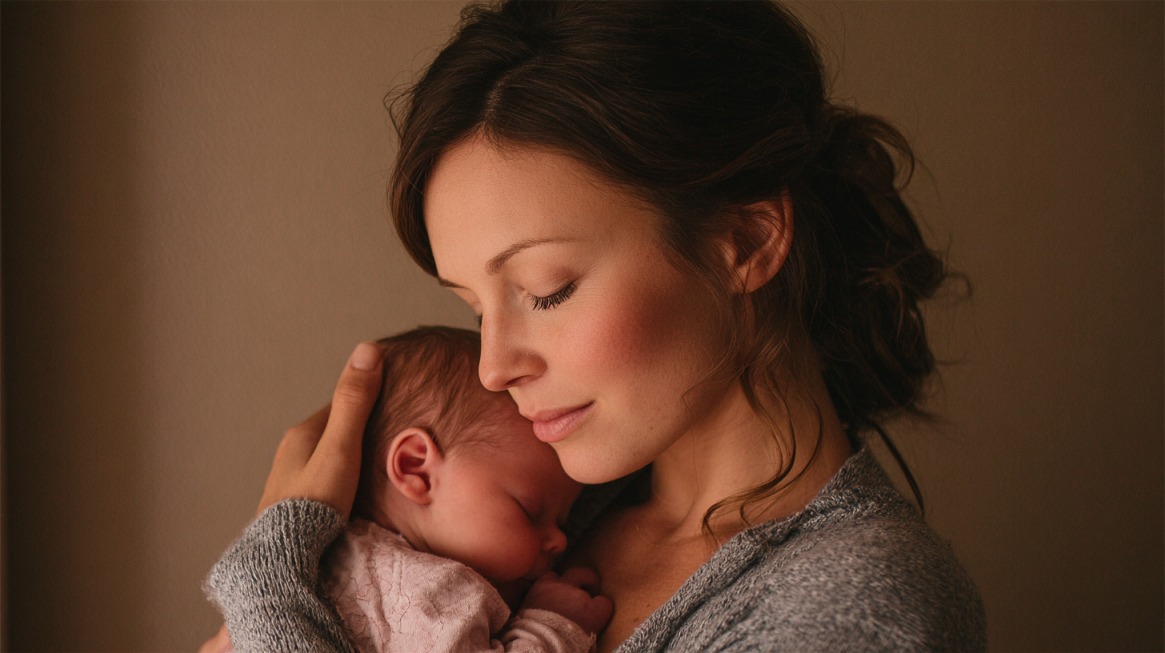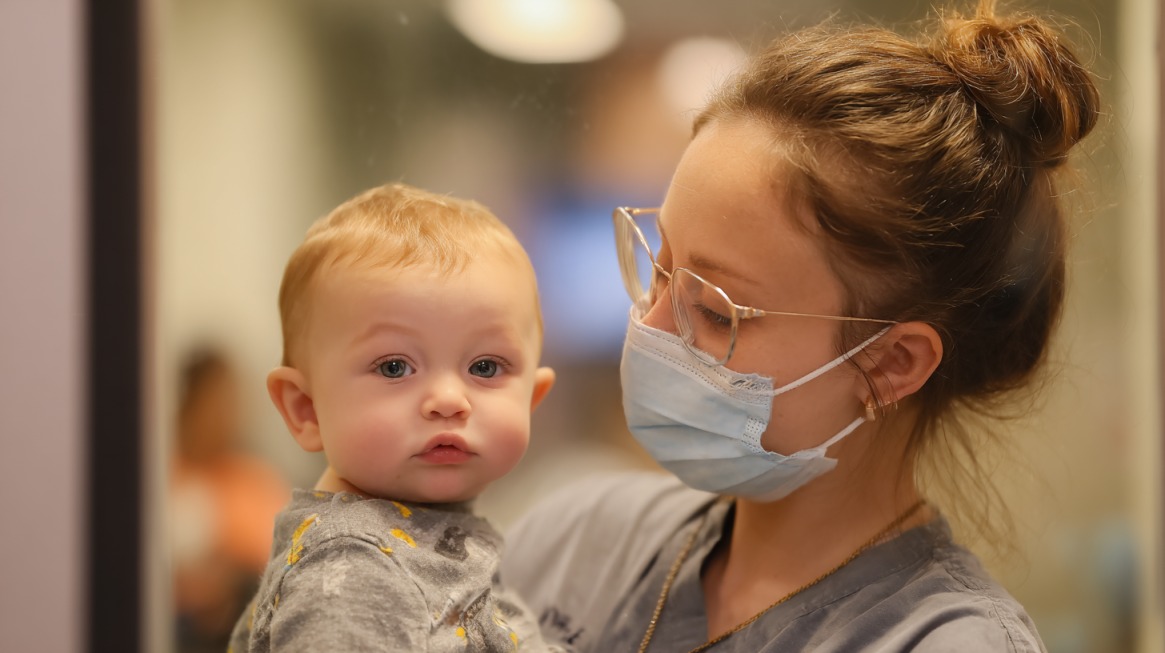Scissor legs in infants describe a condition where a baby’s legs cross or stiffen tightly when lifted or held upright. It can be an early indicator of muscle tone abnormalities or neurological issues.
Recognizing this pattern early is essential because it helps parents and doctors detect underlying conditions that may affect movement and development.
Early diagnosis allows timely interventions such as physical therapy or neurological evaluation, improving long-term outcomes.
Scissor legs can often be linked to disorders affecting muscle control, such as cerebral palsy, making awareness and observation critical during infancy.
Key Symptoms to Watch For

Early observation plays a major role in identifying scissor legs in infants.
Parents often notice the first signs during everyday activities, such as diaper changes or when lifting their child. These visual and behavioral cues can indicate underlying muscle tone problems that require attention.
Several key symptoms are commonly associated with scissor legs, and being aware of them can help detect the condition early.
Common warning signs include:
| Sign or Symptom | Description |
|---|---|
| Persistent crossing of the legs | Legs remain crossed when lifted or during diaper changes |
| Muscle stiffness (hypertonia) | Tightness in the hips and thighs indicates increased muscle tone |
| Exaggerated reflexes or jerky leg movements | Legs respond excessively or move suddenly when touched or stretched |
| Resistance to leg separation | Legs resist being spread apart |
| Abnormal posture | Unusual body positioning when the baby is held upright |
| Difficulty spreading legs apart | Limited leg movement due to increased muscle tone |
| Delays in motor milestones | Slow progress in rolling, sitting, or crawling |
| Uneven crawling or favoring one side | The baby may crawl asymmetrically or rely on one side of the body |
A lopsided crawl, preference for using one arm or leg, or unusual stiffness are indicators that something may not be progressing as expected.
Parents should trust their instincts and consult a pediatrician if any of these symptoms persist.
Early detection can lead to timely therapy, improving mobility and muscle control as the child grows.
Causes of Scissor Legs in Infants

Several factors can lead to scissor legs in babies, ranging from neurological disorders to temporary muscle tone imbalances.
Identifying the underlying cause helps determine if the issue is temporary or linked to a condition requiring treatment.
Major causes can be grouped into four categories:
Neurological Causes
Neurological conditions are among the most significant contributors to scissor legs in infants. These disorders affect the brain’s ability to control muscle movement and tone.
Cerebral palsy, particularly the spastic diplegia type, is one of the most frequent neurological conditions.
Babies with this condition often display stiffness mainly in the legs, leading to a crossed-leg posture that becomes more apparent over time.
- Increased muscle tone causing tightness in the thighs
- Difficulty coordinating leg movements
- Poor balance when attempting to sit or crawl
- Noticeable delays in physical milestones
Poor coordination and slower progress in motor development are additional red flags that point toward neurological involvement.

Birth-Related Factors
Events surrounding birth can also play a role in the development of scissor legs. Complications during delivery or premature birth can interfere with oxygen flow to the brain, affecting muscle control and tone.
- Injuries during delivery
- Premature birth before 37 weeks
- Oxygen deprivation, also known as birth asphyxia
- Neonatal infections affecting the brain or spinal cord
Such conditions can disrupt normal neurological signaling between the brain and muscles, resulting in spasticity or stiffness in the legs.
Prompt neonatal care often reduces long-term complications, but early observation remains essential.
Genetic and Congenital Conditions
Some babies are born with genetic or congenital conditions that alter muscle tone and coordination.
Genetic motor disorders, such as hereditary spastic paraplegia or congenital brain malformations, can lead to scissor legs by impairing normal motor function.
- Family history of neurological or movement disorders
- Muscle stiffness is present shortly after birth
- Delayed growth or movement milestones
- Presence of other structural abnormalities in the brain
These cases often require specialized testing to determine the genetic or structural root of the problem.

Normal but Temporary Developmental Variants
Not all cases of scissor-like leg movement are signs of a disorder. Some infants exhibit mild, temporary tone imbalances that naturally resolve with growth and physical development.
These can occur as the nervous system matures and begins to regulate muscle tone more effectively.
- Mild stiffness without significant delays in movement
- Gradual improvement over weeks or months
- No accompanying neurological symptoms
- Normal feeding, reflexes, and alertness
Although temporary in most cases, observation remains important to confirm steady improvement. Persistent stiffness or lack of progress should still be evaluated by a medical professional.
Connection Between Scissor Legs and Cerebral Palsy
@drezekieloburu Scissoring gait: when every step feels like a struggle 🚶♂️✂️ Often seen in conditions like cerebral palsy 🧠, it’s caused by tight hip adductors pulling the legs inward—making them cross over like scissors. #NeuroOrtho #ScissoringGait #GaitAbnormalities #CerebralPalsy #WalkingWithCare #OrthoFacts #OrthoExplained #Orthopaedics ♬ original sound – Dr. Ezekiel Oburu
Scissor legs often serve as one of the earliest visible indicators of cerebral palsy, particularly its spastic type.
Cerebral palsy results from brain injury or abnormal brain development that affects muscle tone and control.
Muscle stiffness mainly targets the legs, causing them to pull together in a crossing motion when a child is lifted or attempts to stand.
In babies with spastic cerebral palsy, the muscles responsible for extending and separating the legs remain overactive, creating constant tension. This rigidity prevents normal movement and can interfere with walking or crawling later on.
- Stiff or floppy muscles in different body parts
- Poor head control during early infancy
- Tremors or involuntary shaking
- Unusual crawling methods, such as dragging one leg or arm
- Delayed milestones like standing or walking
- Difficulty maintaining balance or posture
Early recognition of these combined symptoms helps in obtaining an accurate diagnosis and starting early intervention.
Physical therapy, stretching exercises, and medical management can improve flexibility and coordination, giving children better control of their leg movements.
When to Seek Medical Attention
Parents play a vital role in observing their baby’s motor development.
Prompt consultation with a pediatrician can make a significant difference in diagnosing and treating potential neurological or developmental issues.
- Persistent leg crossing that does not improve after several months
- Noticeable stiffness or resistance during movement
- Developmental delays in rolling, sitting, or crawling
- Difficulty feeding, swallowing, or making sounds
- Abnormal postures or repetitive jerky movements
- Episodes resembling seizures or spasms
Families with a history of premature birth, difficult labor, or oxygen deprivation should be especially vigilant. Pediatricians may recommend physical therapy, neurological testing, or imaging to uncover the cause.
Timely intervention offers the best chance for improved motor development and reduced long-term effects.

Diagnosis and Evaluation
Diagnosis of scissor legs involves a detailed medical and neurological assessment to identify the underlying cause.
A pediatrician will begin by observing muscle tone, reflexes, and how the baby responds to different physical stimuli.
If signs of neurological issues appear, the child may be referred to a pediatric neurologist or developmental specialist for further examination.
- Physical and neurological exams: To assess muscle strength, coordination, and reflexes
- MRI or CT scans: To detect any brain injuries or malformations
- Developmental screenings: To monitor progress in milestones like sitting, crawling, and walking
Accurate diagnosis ensures that the right treatment plan is put in place. Therapies such as physical and occupational therapy can significantly improve flexibility and coordination.
The Bottom Line
Early recognition of scissor legs in infants is vital for ensuring healthy development and addressing any underlying neurological causes.
Persistent stiffness or leg crossing should not be dismissed as harmless.
Prompt medical consultation can identify treatable conditions, guide parents toward effective therapies, and greatly improve a child’s mobility and quality of life. Parents play a key role by observing, reporting, and advocating for their baby’s health needs as early as possible.

